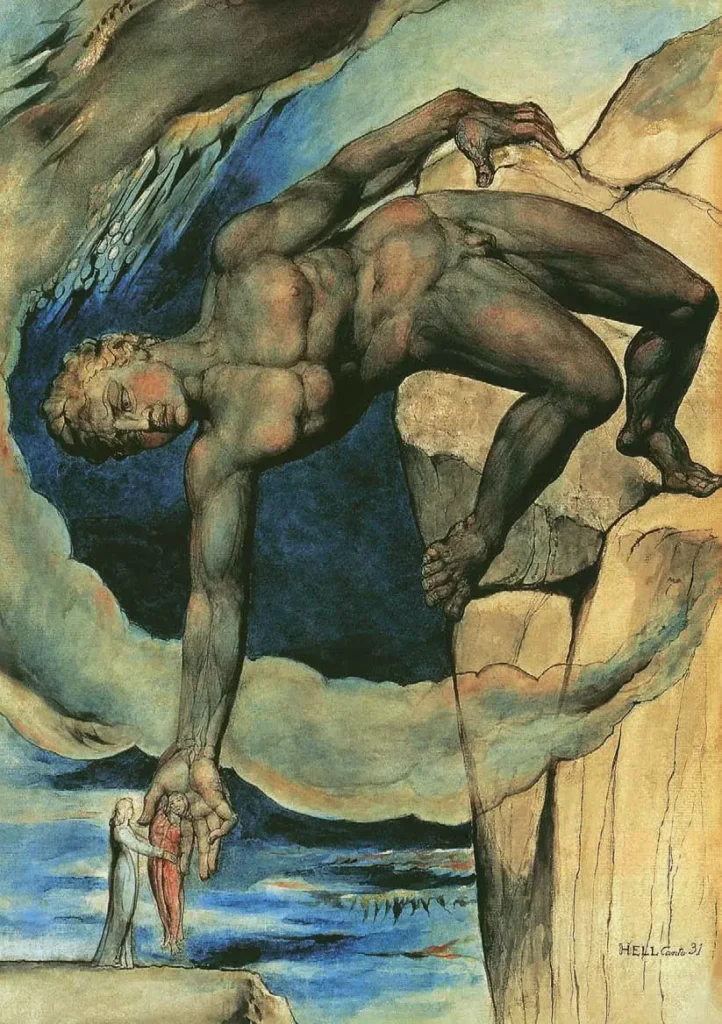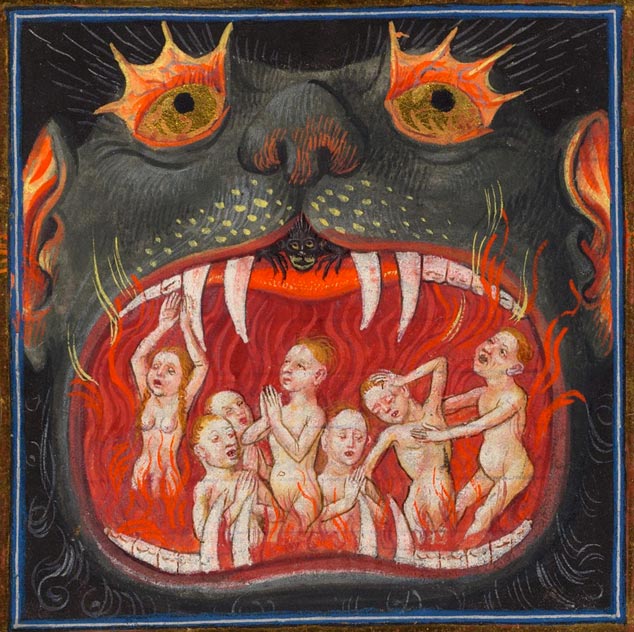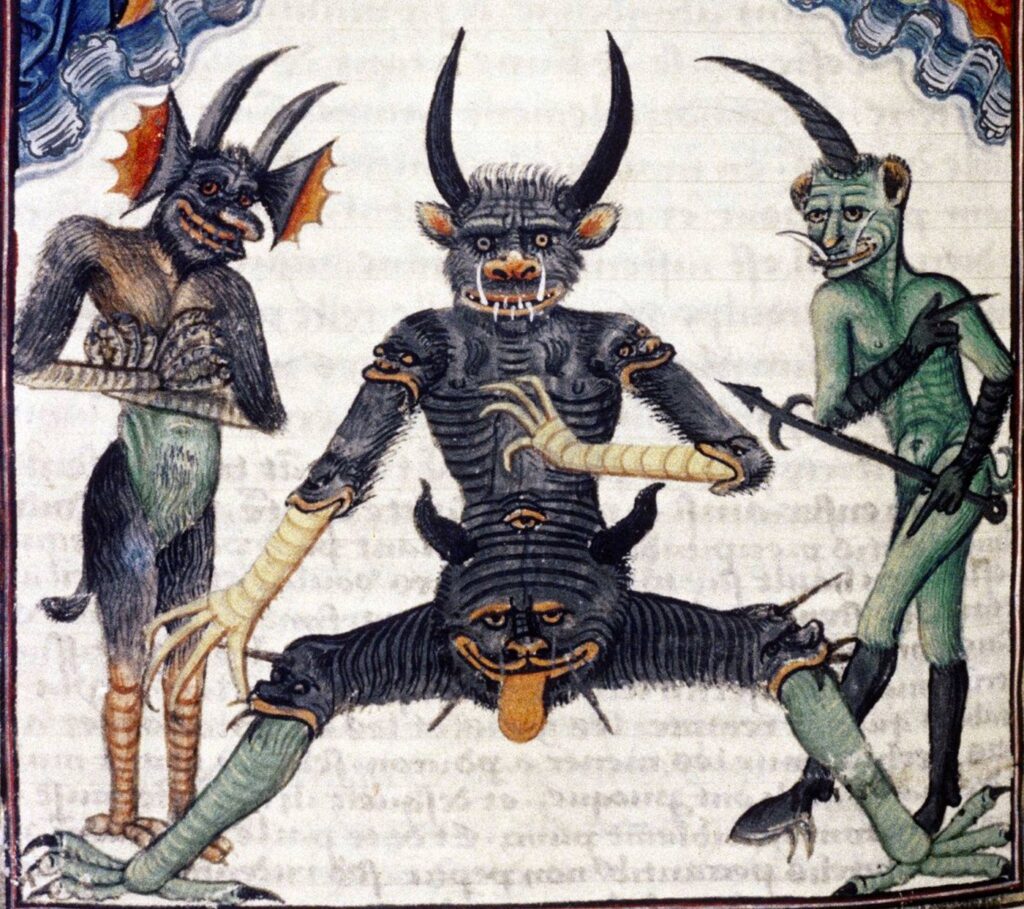Dante, Hell’s topographer, imagined its location and architecture with such specificity that Botticelli could map it in painstaking detail two centuries later. By now, images that stirred Savonarola’s audience to fear of sin have dwindled to plot devices in pulp thrillers and horror movies. Of all impossible thoughts, Hell is the most unthinkable for us moderns. Displaced by myths of progress, the concept survives largely as a cultural heirloom, a curio. A place where the worm does not die and the ever-burning wrath of God never goes out strikes us as preposterous. And yet . . .Whatever the word describes—a bleak galaxy outside the Hubble radius? a state of being?—I believe in Hell.
No, not that realm of horned devils with cloven feet and pitchfork tails. The shelf life of hellscapes in medieval prayer books expired. Warnings on parchment, illuminated goads to repentance, subsided into Art. We are safe from them there. Nevertheless, realities do not wither because symbols that represent them have hit their sell-by date. Evil maintains its hold. Sin endures. Even now we have our demons. Possession, more diffuse and subtle than it used to appear, still exists. Only our language and thought-forms have changed. Hell’s throngs do more than prowl. They are the pivots on which the contemporary world turns.

Tempted like no generation before us, we confuse material and technological progress with spiritual progress. We are led into the abyss by the piping of unholy world-improvers and planet-savers. Sinister philanthropists and oligarchs, consumed by their own obsessions, snare us into believing we have come of age. Under their spell yap legions of cub hellhounds—press secretaries, publicists, media imps—flashing bargains as seductive as any devised by Mephistopheles. We need only follow their prompts.
Fifty years ago, in The New Demons, Jacques Ellul identified the accursed: power, wealth, science, technological overreach, and spurs to unrestrained sexuality. By sacralizing the state and its ambitions, Ellul’s infernal adversaries position themselves outside of constitutional restraints, dissolving traditional bonds and obligations with humanitarian language.
We meet the ranking demons in each day’s news. You know their names and works. No need, then, to mention more than a few.
Princes of hell jet to chalets in Davos where they reinvent redemption for the masses. Senior seducer Klaus Schwab hisses to the credulous about a Fourth Industrial Revolution. He invites susceptible prey to a “fusion of our physical and digital and biological identity.” His acolyte Yuval Harari promises that this grand fusion will occur once free will is overwritten by implantable microchips, refined genetic techniques, and—why not?—mandated vaccinations.
Free will is a myth inherited from Christianity. Both must go. “We are now hackable animals,” trills Harari. His denial of free will exchanges sin for festivals of absolution-on-demand. It is a helluva deal.
Do you smell the sulfur?

Pope Francis honors the vanities of the Great Reset. He blessed the 2020 Davos conference: “I send greetings and prayerful good wishes to all taking part in this year’s gathering. . . . I invoke upon all of you God’s blessing of wisdom.” The smoke of Satan seeps under Vatican doors—Paul VI said as much—to fog distinctions between wisdom and demonic suggestion.
Suchlike suggestions drive de-civilizing forces: racial resentments, transgender mania, climate panic, environmental pieties, technological conceits, moral tumult, and ever-dividing subsets of them all.
Swiveling the axis under biology is, perhaps, the most deranged satanic wile. It hatches new species. First came transpeople. Now come—if you keep up with the lingo—neurodivergents. Self-selected demoniacs, the neurodiverent can change their pronouns three times before lunch while explaining gender fluidity to kindergartners.
In revolt against the contingencies of a God-created world, demons lure the credulous with visions of a renovated world, a radiant new order managed by idols made to their own measure. The endgame is a de-Christianized, race-conscious, surveillance state. Even in decay, the snake-pit can be kept roiling by central planners able to pin a forked tail on anyone who confronts the rot.
• • • • •
Yevtushenko was right. Stalin has not given up. He was just pretending to be dead: “While Stalin’s heirs walk this earth, / Stalin, I fancy, still lurks in the mausoleum.”]
• • • • •
Just like viruses, demons need a host to survive. They cannot thrive and reproduce without one. Like viral particles ready to spring into action, undetected demons incubate inside us, biding time.
In sum, hell is not outside of ourselves. We carry it within and ferry it about. This system of infection, mutation, and spread, used to be called Original Sin. It is what Henri de Lubac meant when he wrote: “Hell is the work of man, of the man who refuses to give himself [to God] and puts himself in bondage.”
This hell I believe in.

• • • • •
Reflection on hell by Dana Gioia:
Like any city, Hell has neighborhoods
Where the like-minded congregate.Like any city, Hell has avenues
Where silent strangers circulate.Like any city, Hell has leadership
Where rows of dead men legislate.Like any city, Hell has history,
Old evils to commemorate.Like any city, Hell has hidden laws
For demons like to regulate.An efficient and eternal city-state,
Which darkness will perpetuate.

Note: A version of the essay above appeared in The Lamp Magazine, issue #12, August 2022. Dana Gioia’s poem was published there also.


